Can You Hide From Thermals?
Posted by Spiritus Staff on May 15th 2025
Can you mask the thermal signature that a suppressor puts out? That was the question we set out to answer. For the purpose of our testing, we decided to include a variety of different recording methods to take in as much meaningful data as possible. This included a thermal monocular, a video camera with a PVS14 attached, an IR camera, regular video cameras, as well as an infrared temperature gun. We took temperature readings at each stage of the process and reviewed footage recorded across our multiple devices to see what exactly was happening with both the gun and accessories we had bolted on.
Given that even a short string of fire or even a single shot can cause a suppressor to heat up to the point of being extremely visible on thermals, one has to worry about this beacon of light that can potentially be visible across multiple spectrums and act as a clear indicator of where someone is. There is definitely a sliding scale of how much an individual should worry about this. At one end is most likely a SWAT team running a lot of callouts in an urban environment, and at the other is a reconnaissance team whose survivability largely hinges on their stealth. Really, it’s up to the individual to figure out the significance of the problem in their specific set of circumstances.
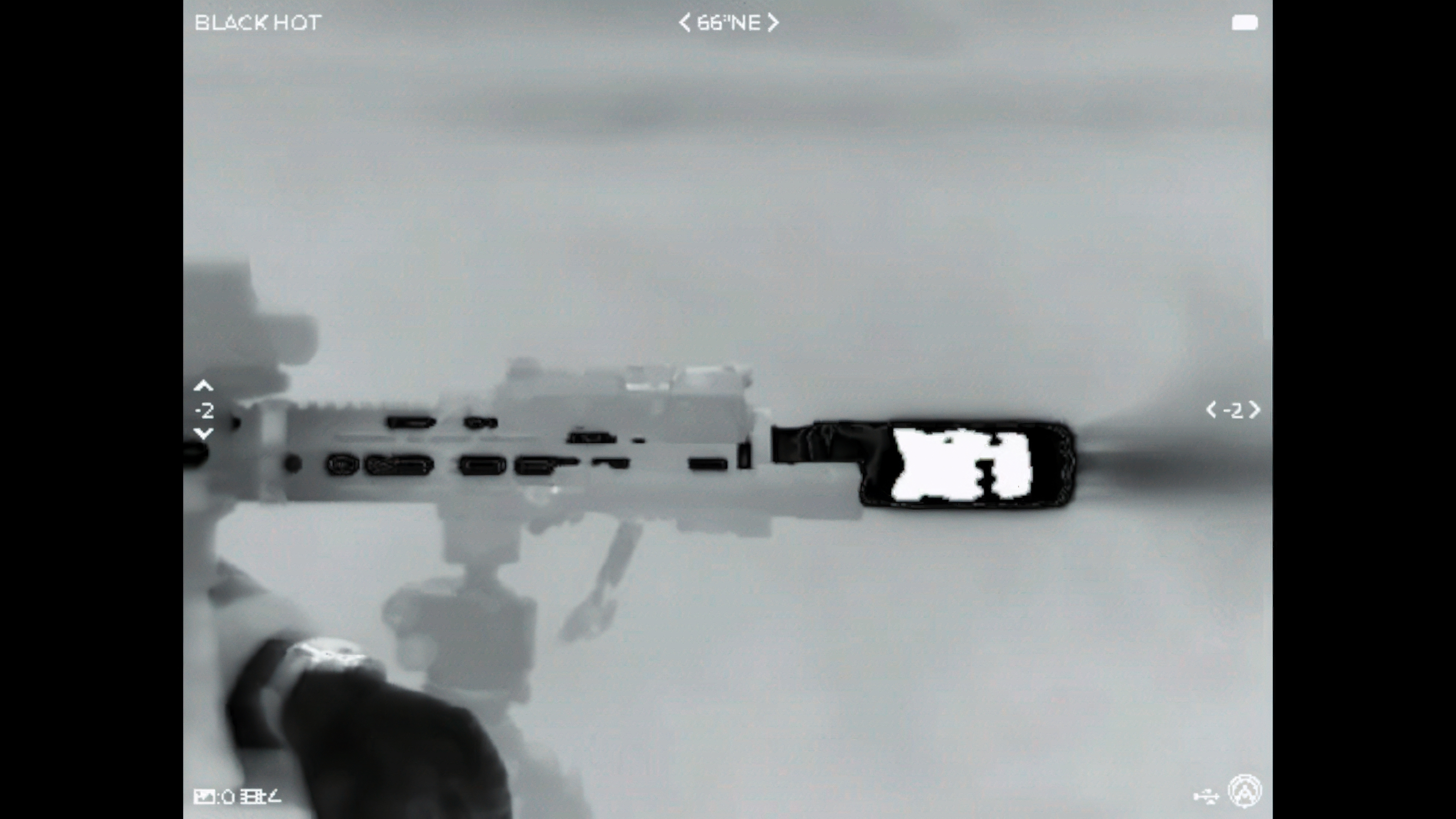
(Note: Thermal clipping occuring on the suppressor when viewed via black hot on the thermal.)
Now, given that this was essentially backyard science, there is always going to be some amount of error we can’t account for or correct for. The rifle that we opted to use was a 12.5 Knights Armament SR-15, a consistently reliable gun that doesn’t have any weirdness to it that could alter the results. We used a Modtac suppressor cover device. We opted for the hard-shell cover that had an air gap between it and the suppressor. The reason for this, at least that we hypothesized, was that the heat transfer between a cover that contacts the suppressor would still produce a significant thermal signature. Thusly still compromising the user. That being said, a wrap that makes contact with the suppressor is still beneficial in other ways. They act as a thermal barrier that can prevent a hot suppressor from burning the user after bringing the gun down from shooting. Wraps can also mitigate heat mirage, which can be a serious impediment to long-range shooters.
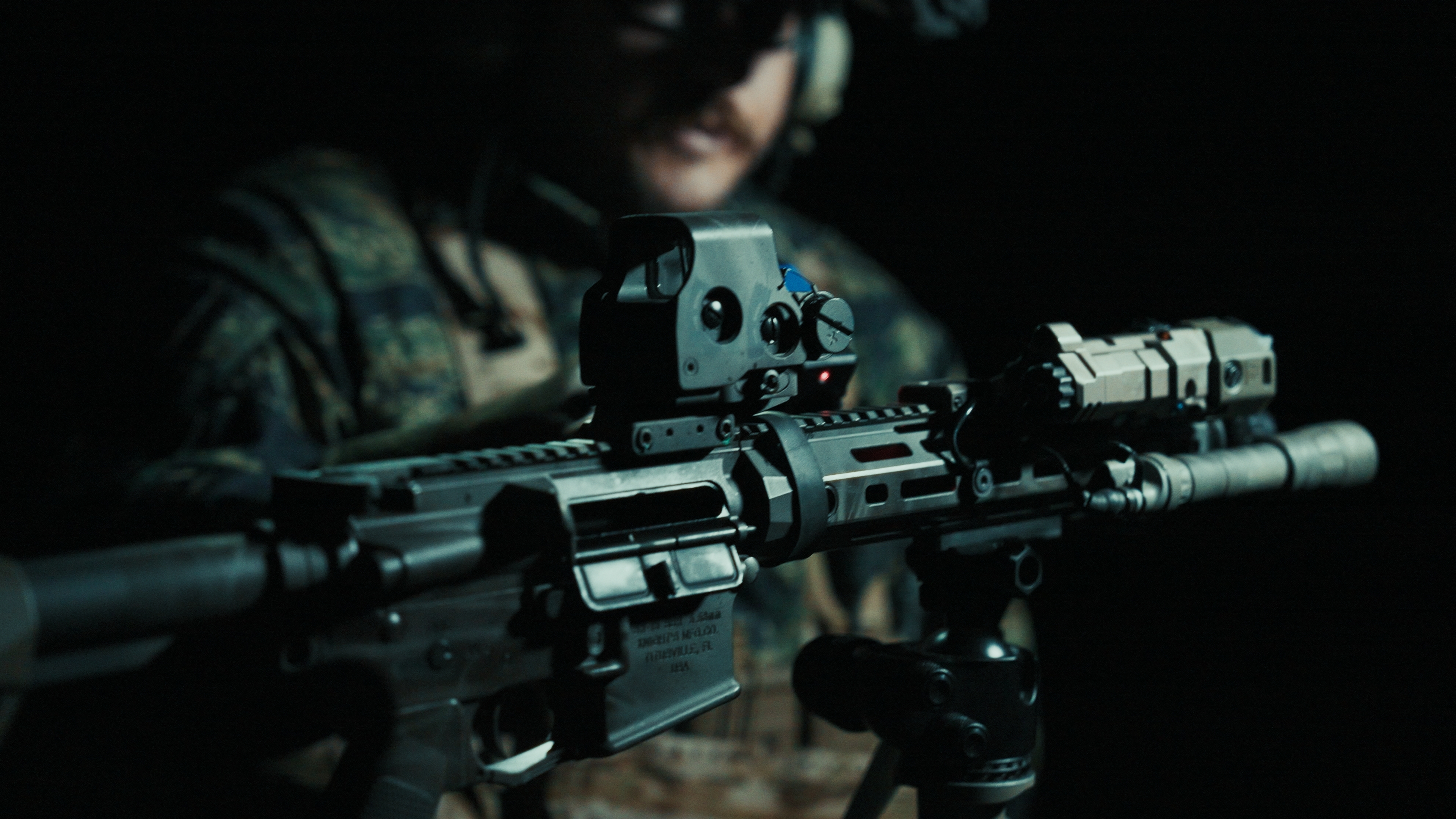
(Note: The Knights Armament 12.5 test rifle.)
The test was broken up into a few different segments. The first was a shooting segment, which was done from a tripod. Each phase of the test was broken up into a single five-round and a ten-round shooting string. Temperature readings were taken before and after to look at the temperature variance/increase. The stages of the test were unsuppressed, suppressed, and suppressed with the shroud. The second half of the test was a visibility stage. During this portion, the rifle was shot with and without the suppressor shroud and filmed close up and also at distance. The goal being to see to what extent the visibility would increase. What we found when doing the testing was as follows. Shooting the rifle without a suppressor at all immediately resulted in the barrel showing up as black hot on the first round. Continued shooting heated up the handguard a bit, but the change was minimal.
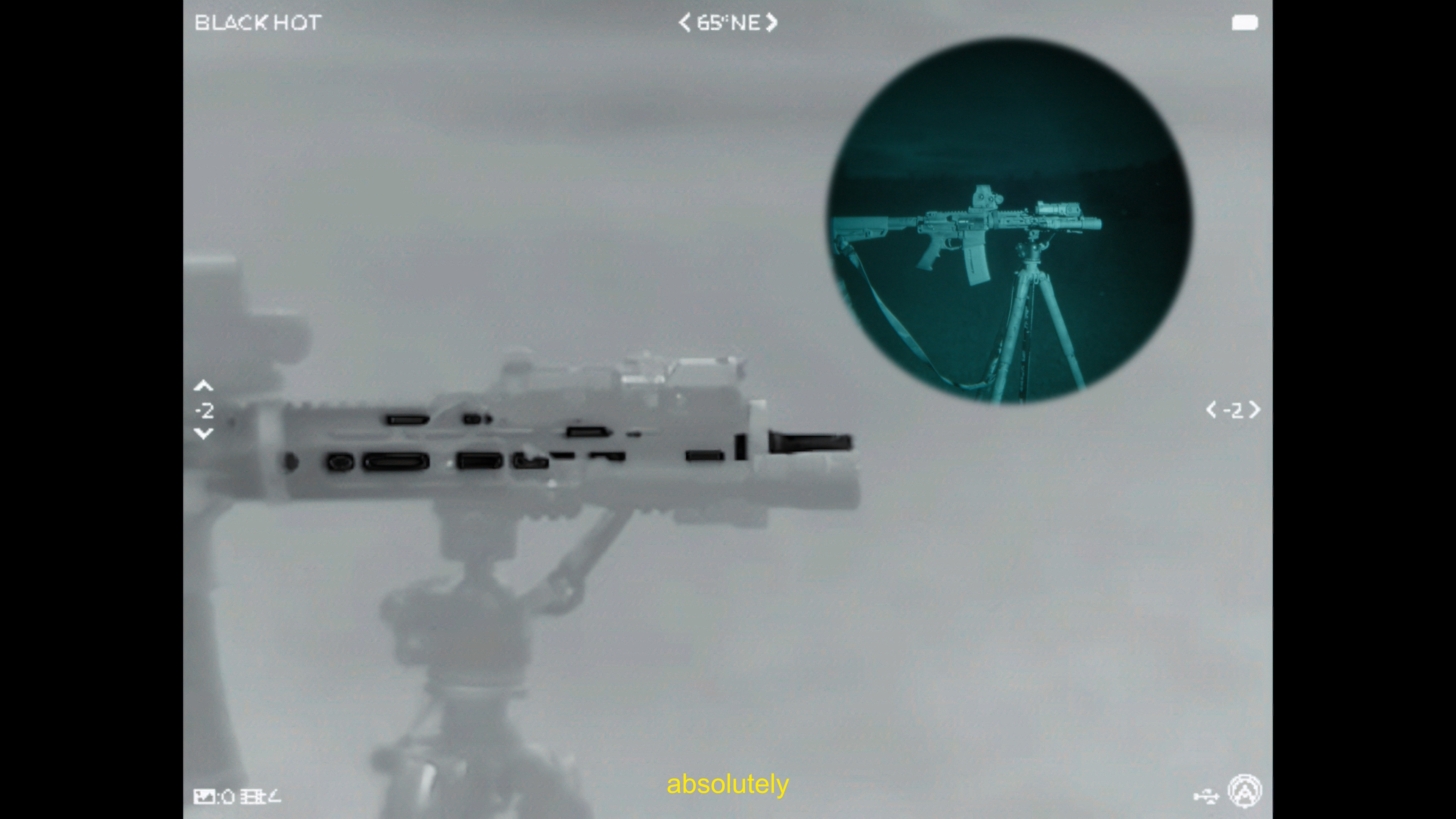
(Note: First round fired immediately showing black hot.)
After putting on the suppressor and shooting the front end of the gun got hot, stayed hot, and very quickly became a beacon of light that was so intense the thermal started clipping as it was having trouble processing the image. The difference between 1 and 5 was moderate, but the difference between 5 and 10 was fairly significant. Thus far, everything tracks with the fairly traditional shooting experience in regards to both suppressed and unsuppressed rifles.
When we put on the Modtac suppressor cover, there was an immediate difference in terms of visuals. The single-shot test resulted in almost no notable change from previously being unfired at and around the muzzle. The barrel still went black hot immediately, but the cover/suppressor combination barely spiked above ambient. The five-round shooting string did show a noticeable change in terms of temperature, but it wasn’t anything crazy in terms of color change on the thermal. When compared to the 5-round string, shot with just the suppressor, the heat signature was greatly reduced. Another important note regarding the heat signature was how delayed it was. It took a few seconds after the string of fire had been completed for the heat to transfer from the suppressor across the air gap to the cover. The ten-round string did show an increase in temperature, however, as with before, it was delayed and significantly less than if the suppressor was uncovered.
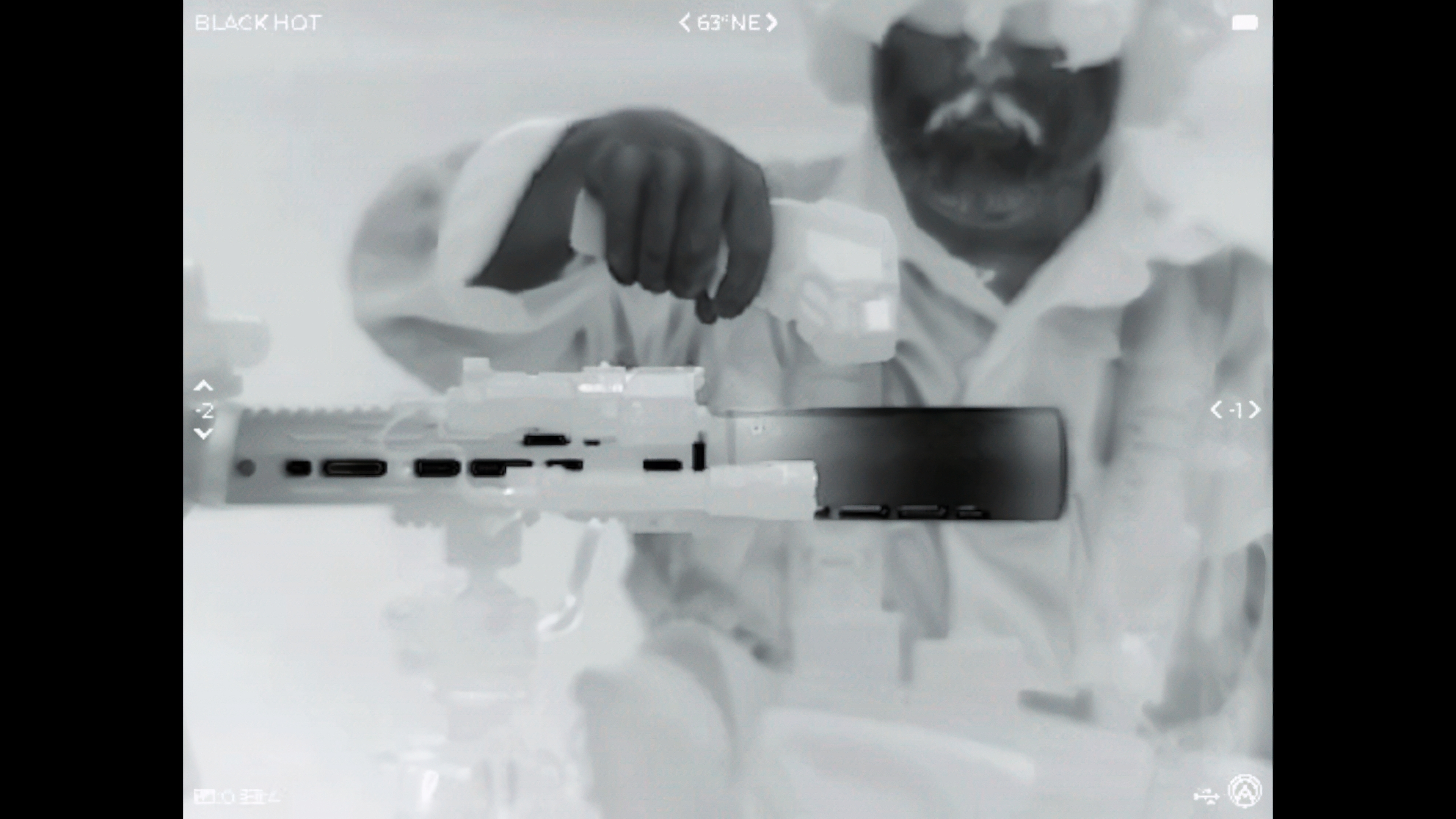
(Note: The Modtac suppressor shroud masking the heat coming off the suppressor.)
For the practical visibility tests, we had two separate events, the first was getting the suppressor red hot as a baseline to show the extremes in regards to visibility. Then, a second run after it was cooled down was with the shroud to see how much of a difference it would make. The comparison between the two definitely stood as a testament to the effectiveness of the shroud, with the beacon effect of the suppressor being cut down significantly. The rifle was still getting hot, but the contrast between the shrouded suppressor and exposed skin was fairly minimal.
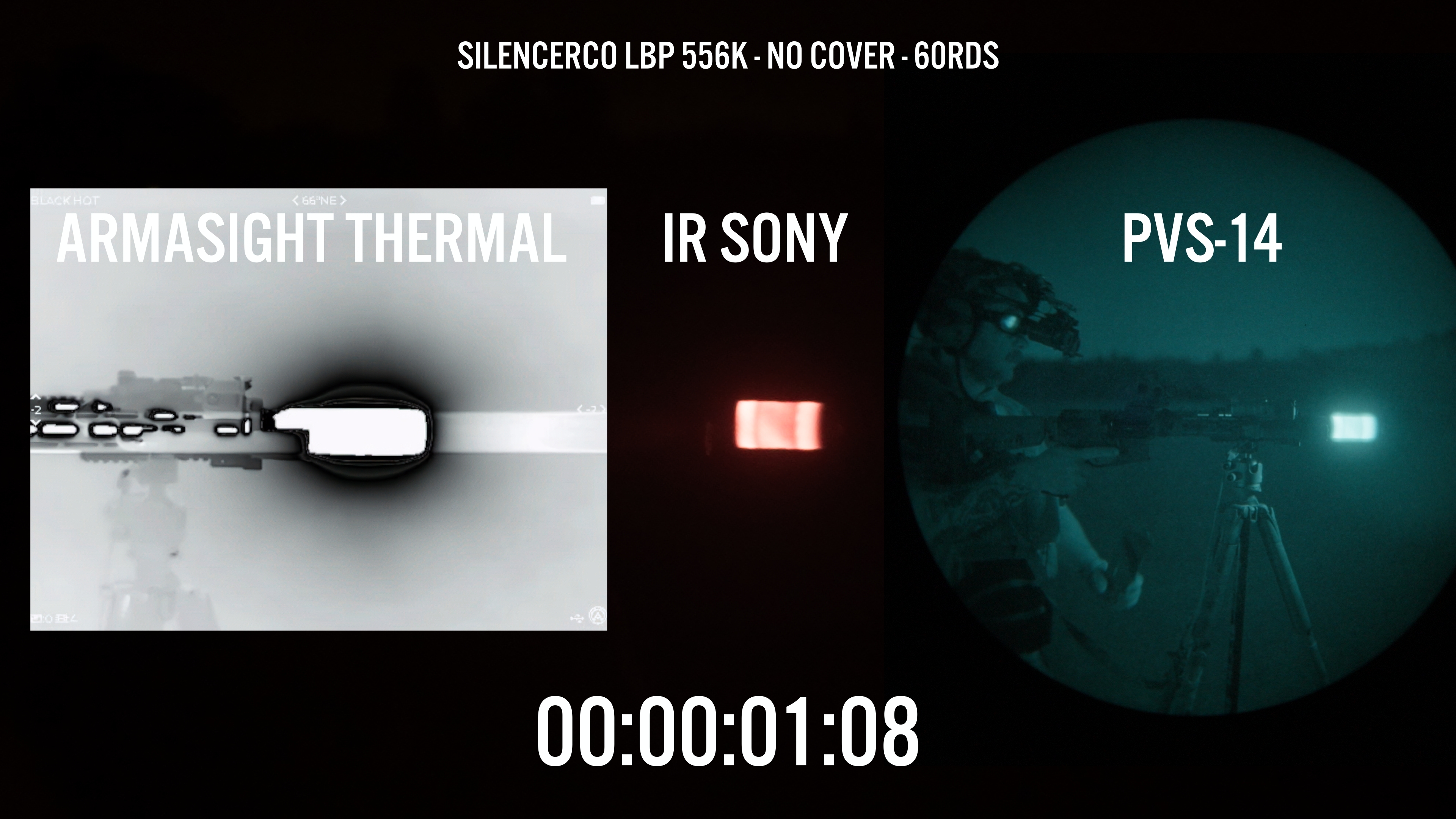
(Note: The effects of sustained fire on a suppressor across the spectrums of cameras.)
Something that we’d like to take a second to point out is that a hard suppressor shield with an air gap around it and heat vents is going to dissipate heat considerably quicker when compared to an insulated suppressor wrap, which by design is trapping the heat in between it and the suppressor. That being said, the air gap does come at the cost of additional bulk. This is something to consider when looking at what accessories you feel you need for your rifle. Both accessories definitely have their time and place when it makes sense to utilize them.
As a collective, we were very impressed by the Modtac shroud’s ability to hide the suppressor's heat and light signature. We went into this test with zero expectations and were genuinely surprised that it was able to do such an effective job at masking the suppressor. There certainly are some downsides, like the overall bulk and added weight to the front-end of the rifle. With that being said, the pros most certainly outweigh the cons in this situation. If you want to see the full extent of our testing, check out our YouTube video on this topic down below.

